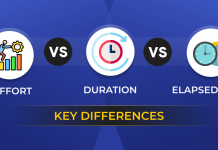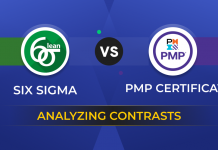
A project communication plan is a coordinated effort by all members involved in a project starting from the manager to the junior members. All members are responsible for the way it is being presented, and the message that is being delivered.
A communication plan in project management addresses a few basic questions such as who will be at the receiving end of project information; what information needs to be distributed; in what manner will the information be distributed and at what frequency; and finally who will be responsible for delivering all communications.
According to project management approaches, for a small project, a communication plan can be simple. However, it becomes complex along with the complexities and size of the project. Project communication can be planned in advance so that the right project information is delivered to the right people in the right manner.
Now that we understand what a project communication plan is, let us take a look at the key factors to be taken into account to build a communication plan successfully.
-
Know Your Audience:
The primary step being taken in order to create a project communication plan is identifying your audience. ‘Who needs to know?’
-
- The project team forms the core of all sorts of communication-related to the project. Every small and big progress needs to be communicated to the team members.
- Project stakeholders although not associated directly with a project, make critical decisions related to budget, resources, and other factors. Hence, stakeholders form a very important part of the audience.
- The project sponsor holds a similar place to that of stakeholders and the same information in a similar manner needs to be communicated to both parties. Project sponsors are often called for face-to-face meetings and they often are involved in critical decision makings in many occasions.
- Suppliers, vendors, partners, regulatory agencies, and investors may form part of your external audience. The information that you share with the external audience may not be as in-depth as that of your internal audience. Provide information as much as is required. However, in case you are in a problem for which you need support from vendors or suppliers, you need to provide information in detail.
-
Content of the Communication:
The second factor that should be considered in a project communication plan is the delivery of the content to the type of audience to which a communication is being delivered. The communication may wary depending upon the the audience. Each message should be crafted for a specific audience. For example, technology-related information is provided to developers which may include the software/hardware expected by stakeholders and those specified by project sponsors. However, the same information need not be provided to end users. They will get information related to the functions of the end product and its benefits.
-
Medium of Communication:
Although electronic medium or email is the most convenient and efficient means of project communication plan, not all kinds of information should be communicated through it. Sometimes face to face discussion is necessary for which mediums like webinars, video feeds, town hall meetings, and group presentations are required. Such forums provide a way to have question-answer sessions, debates, and discussions through which goals can be decided, and outputs can be discussed. Newsletters are also effective means of communication about project outputs and progress. Discussions and debates during town hall meet and webinars are also documented and presented through newsletters.
-
Timing for Communication:
In project communication plan it is to ensured that the communication for any project should start during the initial phases. Although the initial phases of discussions will not be as detailed and robust as the later phases, the initial discussions regarding bringing in changes to the infrastructure or processes are critical. Information flow, in this case, should be handled in coordination with the senior management of an organization. This coordination decides what information will be delivered at various junctures of a project.
Read this Article on 7Cs of Effective Communication and become an expert in creating an effective project communication plan.
-
Types of Information:
-
-
Project Plan:
The project plan helps those involved in the project understand the goals and purpose of a project and their respective roles in completing it. Starting from the problem statement to the key roles and responsibilities, the plan provides a picture of how you plan to run the project. An audience like a stakeholder or a project sponsor may take time to review and approve the plan; while others such as team members may simply carry on with the work they have been assigned as per the plan.
-
Project Execution:
Once a project plan is approved, everyone associated should be informed regarding the rules and regulations such as applying for leaves, escalating issues, and reporting time and expenses. Communications should also be provided regarding the status of a project and what is in store for the future so that everyone is on the same page regarding project progress. However, the presentation of information should be crisp or detailed depending on the audience. Stakeholders may be interested in the communication which targets the financial aspects, whereas the same may put the technical folks to sleep. Similarly, technical information is of least interest to stakeholders or those associated with financing, budgeting, etc.
-
Project Closure:
In project closure phase, the performance report is a vital thing to be documented and communicated to everyone associated with the project. The performance report provides a clear picture of whether the project achieved its goals, how far the investment was worth, whether the budget was exhausted etc. Every individual associated directly or indirectly with the project will have a keen interest in the performance report of a project.
-
-
Incorporating Feedback in Communications:
When it comes to delivering a successful project, it is essential to consider stakeholders and their views in measuring success. Every stakeholder may have a different parameter of measuring success which you need to take into consideration while framing the communication. For example, one stakeholder may consider that a project is successful when it is able to live up to the pre-decided budget, whereas another stakeholder may consider on-time completion as a critical factor, while the third stakeholder may consider, identifying and incorporating changes at the right moment as the key success parameter. Ensure that you incorporate every stakeholder’s perspective and develop the communication plan.
‘Some stakeholders may provide solutions to problems in their feedback report, while others may want to discuss it over. Both ways, inputs from stakeholders serve as a critical component of a project’s communication plan.
Below are a few suggestions to gain useful feedback from stakeholders:
-
-
Including all Stakeholders:
It is important that you include the opinion of all stakeholders involved in your project. By not doing so, you are restricting the guidance opportunities, hence, limiting the chances of success of your project.
-
Providing Required Information:
You should provide your stakeholders with the information they need. Refrain from providing extra information. Otherwise, your stakeholders may ignore your reports in the future because they are as busy as you are. Ensure that you provide information in a format that is easy for them to edit. Some may provide an excel spreadsheet to play around with the numbers, while, others may prefer graphs or pie charts.
-
Providing Action Plans:
Status reports are important. However, it is not the best approach to restrict your communication plan only to reports. It restricts the scope for stakeholders to provide their inputs. If you put action plans, stakeholders will be able to provide inputs at an early stage which you can incorporate with ease later.
-
Communication is an essential component of a project plan. It gets you the essential feedback as well as lets you inform about your proceedings to everyone across the organization. In order to communicate with everyone, choose the best medium suiting your audience and the type of information you want to share. Catchy and well-framed communication grabs attention and has fewer chances of being missed out or ignored.













